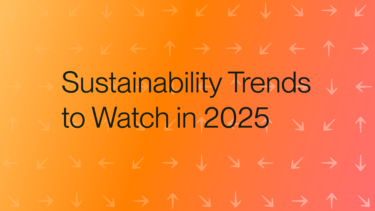
Contents
- Complexities of calculating Scope 3
- Why the right approach is not clear
- Selecting the right Scope 3 approach
- How Anthesis can help
- Contact us
Share this article
Complexities of Calculating Scope 3 Versus Scopes 1 and 2
As companies undertake daily activities, they use energy and generate greenhouse gas (GHG) emissions—the leading cause of global climate change. For companies to manage their climate impacts, it is a critical first step to understand the magnitude of the emissions for each company or activity. A full GHG inventory will account for emissions generated not only in an entity’s own operations but also along their value chain. Accurate GHG emissions accounting follows accepted standards that require a separation of emissions activities into distinct scopes. As such, a company’s GHG inventory is made up of Scopes 1, 2, and 3. Scopes 1 and 2 arise from a company’s operational activities and include all emissions that stem from energy use and other activities. Scope 3 – or “everything else” – comprises all other emissions generated from activities upstream and downstream in the company’s value chain. Because of its breadth and complexity, Scope 3 emission activities are grouped into 15 categories: 8 upstream and 7 downstream categories.
Scope 1 and 2 emissions are typically calculated from readily available utility invoices or other operational data records. In contrast, Scope 3 emissions are complex and difficult to calculate. A different approach is necessary to gather data, often starting with a directional emissions estimate, such as a spend analysis. This type of hot-spotting analysis will help identify what data is applicable to each category and how to effectively retrieve that data, with a focus on data that is straightforward to retrieve. Data may be sourced from internal databases or external third parties, including suppliers or customers, and will vary depending on the company’s operations. It is not uncommon for Scope 3 to account for 90% or more of a company’s total emissions. This means that companies will need to strategically approach the Scope 3 analysis to efficiently gain insights into their full value chain impact.
The right way to approach Scope 3 for portfolio companies is often unclear
Completing Scope 1 and 2 inventories is the obvious and correct first step. But there are strategic options to weigh and consider when it comes to Scope 3. Do you conduct a full Scope 3 inventory, a partial Scope 3 inventory, or skip it all together?
Another layer of complexity is the different calculation approaches that can be used. Many times, Scope 3 data is challenging to collect, but there are different approaches with varying levels of granularity and specificity that can be implemented. Unfortunately, the level of effort and difficulty generally increases significantly as accuracy improves. As a result, companies normally evolve and enhance their Scope 3 assessments over multiple years.
How to determine what Scope 3 approach is appropriate for your PCs
While there is not a one-size-fits-all approach for Scope 3, considering the four criteria for portfolio companies below will help you appropriately tune your efforts.
- Is Scope 3 reporting requested by important stakeholders? LPs and portfolio company customers are beginning to request Scope 3 data. Additionally, disclosures, like CDP or EcoVadis, ask for Scope 3 inventories, and providing data can enhance scoring. In most of these cases, a partial Scope 3 inventory will be sufficient to meet these needs, and it is best practice to focus on material Scope 3 categories.
- Is the PC seeking to set a Scope 3 reduction target? It is a critical first step to establish a robust baseline through a repeatable inventory to be able to track progress. For companies seeking to set carbon reduction targets approved by the Science-Based Target Initiative (SBTi), the leading standard and framework for setting science-based targets, a Scope 3 target is required for any organization of more than 500 people. In these situations, a detailed inventory becomes paramount.
- Does the company have material Scope 3 emissions that it could influence? If there is high stakeholder pressure surrounding a particular emissions source that the company is expected to address, conducting an inventory for the important portions of the Scope 3 footprint could make sense.
- Is the PC (or you as the GP) seeking to differentiate its products or brand using sustainability? Measuring greenhouse gas emissions across the value chain is a critical practice for a credible sustainability program. It can also help to inform efforts to develop more sustainable products and services.
We offer a spectrum of Scope 3 approaches to match your portfolio company’s needs
In addition to our Scope 1 and 2 inventory offering, we have established a range of Scope 3 inventory approaches that we can implement with portfolio companies. These services reflect a range of granularity, cost, and effort on the part of the portfolio company, and they allow us to provide right-sized solutions that reflect the nuanced situations each company may find itself in.
We are the world’s leading purpose driven, digitally enabled, science-based activator. And always welcome inquiries and partnerships to drive positive change together.




